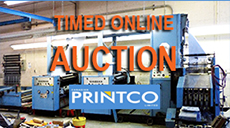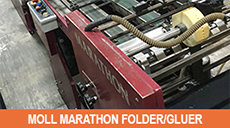Want to raise some blood pressure? Ask a press demonstrator working for any equipment manufacturer to recall one of their most-disastrous demos. In fact, this question is just as likely to evoke strong rebuke from almost any press salesperson or commercial printer who has travelled to see a million-dollar machine in operation.
All press and equipment manufacturers have disastrous days: Not even the largest player, with access to every possible printing resource, would say they have never failed at a customer demonstration. This is largely because both sides of the potential deal have polarizing views of what is to be accomplished in a new machine demo. Did I say both sides? That’s not quite right. There are at least three key players involved with any press demo: the press salesperson, the press buyer, and the press demonstrator, which naturally creates an environment ripe for friction, particularly if all sides are not interested in understanding each other’s points of view.
The Players
For me, the press salesperson is the most logical starting point when describing the players involved in a press demonstration. This is not meant to downplay the printer who is ultimately buying the press. They are clearly the number-one ingredient in a successful demo.
During the first new-machine dance, however, which is the foreplay to the demo, it is critical for the press salesperson to outline the product and hopefully develop a trusting relationship with the potential buyer. It is important that buyer and seller get along, of course, but the press salesperson must properly establish customer expectations, which will truly be tested for the first time during a press demonstration.
Questions will be asked and answered about all of the new machine features and options, which can create a magical buzz within the printing organization.
The buyer is thrown a great deal of information during the initial discussion stages of purchasing a press. At this point, a picture can begin to form within the buyer; because of the recent fine-tune development of modern presses and the potential a printer sees in all of the new machine features and options.
Usually a short list of wants, desires, and anticipated outcomes is established: Cycle times perhaps or maybe how a particular machine would run a specific job. At this point, press operators and other key staff members are often brought into the predemo sales discussion to assess their wants and desires.
In most cases, the input from multiple printing-company personnel, while important, can create more obstacles than pathways if not handled properly, because every individual is likely to add a new list of production biases from their personal printing experiences. It is important here for the press salesperson to become an extension of the buyer, to work out and help steer the company toward the best combination of features and price. Because, at the end of the day, all of this discussion about features and options will culminate at the press demonstration – show me what you told me.
Naturally, the press demonstrator is the third party involved in any such event. But what exactly is a “demonstrator” anyway? Typically, the demonstrator is a well-seasoned press operator, who has moved up from running a press, because they enjoy interacting with people and, most importantly, love printing – meaning they truly enjoy showing other printers what is possible with today’s machines.
These folks usually have worked on a variety of equipment and learned their craft over several years by running any number of presses. The press demonstrator has worked with previous trainers on equipment and picked up loads of press patina. Of course, they will also come with built-in machine bias, particularly since they are now flogging machines for a specific press maker. This makes that list of features and options even more critical to work out before the demonstration, so that time is not wasted on issues that ultimately will not affect any of the parties involved.
Demo Day of Reckoning
Now, here is where it gets interesting: For all intents and purposes, after several weeks of preliminary discussions, to get a fix on pricing and features, suddenly three immovable objects are now set to collide in the demo room. Most printers will have spent a few years between brand new presses and, with the speed of technological advance, they are expecting to be dazzled by all the features promised by the salesperson.
But the buyer is certainly still wary, particularly in today’s lingering economic climate – Although they believe, they do not really “believe.” So the decision-making buyer has brought along their in-house expert, who is usually an operator or righthand technical person. Printers realize a press maker might spend days setting up a demonstration, so it runs as smoothly as possible. Printers will usually insist on bringing their own job files. The buyer wants to see one of their typical commercial jobs run start to finish without giving the demonstrator the benefit of pre-flighting or pre-running a form.
This new-file scenario is very common and completely understandable, because the printer for weeks has likely heard the salesperson brag about make-ready speed and cycle times as key differentiators of a specific press. So, let’s see you prove it.
The job is plated and put on press. Prior to and during this opening sequence, if the salesman is paying attention, they have been conversing with the demonstrator and providing a picture of the demonstration’s key areas. Although a good, experienced salesperson does not want to leave an impression that he is driving the demo, at the end of the day, the salesperson certainly wants to be driving the process.
A good majority of these demonstrations go well and they should, considering the press and the environment is well prepared and scripted. And press demos certainly cost a lot of money, when you consider issues like machine time, stock, labour and travel. Still, many demos crash, with varying degrees of disaster. Some of these crashes are self-inflicted, such as when the demonstrator is suddenly flustered by stock, chemistry or the fact that they did not recheck the ink train to print that big solid or reverse to perfection.
Bad demonstrations can result from simple chemistry issues or complicated by several on-press factors not working that day. More often than not, the buyer’s earlier perception of ease and speed of operation starts to change, particularly if a sweating demonstrator falls into a state of panic and is running all over the press. The press salesperson wants to see an operator looking calm and at ease producing what was promised.
|







